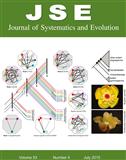De Ma, Hua-Tao Liu, Ya-Jie Ji, Cheng-Min Shi, Yu-Hui Yang, De-Xing Zhang
The black-spotted pond frog Pelophylax nigromaculatus is a typical temperate-adapted amphibian species, largely endemic to East Asia. It occurs from central, east, and northeast China, to the Russian Far East, the Korean Peninsula, and part of Japan. So far, little is known about this frog from the Loess Plateau, a region that has experienced profound changes in climate and environment since the late Miocene. Particularly, between the Loess Plateau and the North China Plain, stand the Lüliang and Taihang mountain ranges, which form an important geographical divide in East China. Therefore, frogs from the Loess Plateau are indispensable for understanding the biogeography and evolution of this species. In this study, a total of 933 specimens of P. nigromaculatus collected range-wide were sequenced for the mitochondrial Cyt b gene, with 345 of them being genotyped at 10 nuclear microsatellite loci. Both mitochondrial and microsatellite data resolved four major frog clades: (i) Loess Plateau clade, containing only frogs from the Loess Plateau; (ii) East China clade, containing frogs from the rest of China except those from the Liaodong Peninsula; (iii) Peninsulas clade, comprising frogs from the Korean Peninsula and Liaodong Peninsula; and (iv) Japan clade. Frogs from the Loess Plateau have deeply diverged from frogs in the remaining regions, with 11.5%–13.1% sequence divergence, which is comparable to distances between congeneric ranid species. Ecological niche modeling analysis showed that the potential distribution ranges of the Loess Plateau frogs and the non-Loess Plateau frogs are rather different; niche identity testing indicated that the environmental niches of frogs from the Loess Plateau and other regions are not equivalent. Our data thus suggest that the Loess Plateau frogs represent a cryptic species. The uplift of the Lüliang Mountains was the most plausible trigger of this cryptic diversification.

